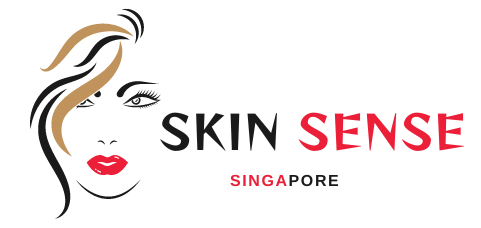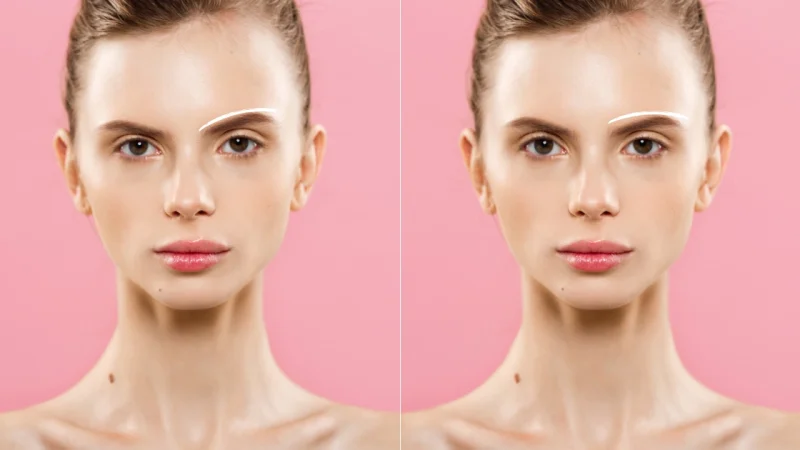Facial symmetry is often associated with beauty, youthfulness, and good health. But in reality, almost everyone has some degree of facial asymmetry — and that’s completely normal. However, when the imbalance is more pronounced or becomes a cosmetic concern, many people start to wonder how to fix an asymmetrical face.
In this comprehensive guide, we’ll explore the causes, non-surgical and surgical treatments, and natural remedies for facial asymmetry, helping you make informed decisions based on your needs and goals.
What Is an Asymmetrical Face?
Facial asymmetry occurs when the features on one side of your face do not exactly match the other side. This can involve differences in:
- Jaw size or shape
- Eye or eyebrow height
- Nasal deviation
- Cheekbone prominence
- Ear placement
- Smile alignment
Mild asymmetry is common and usually unnoticeable. However, severe asymmetry can impact self-esteem and, in some cases, physical function.
SEO Variants: uneven face, face not symmetrical, how to fix facial asymmetry naturally
What Causes Facial Asymmetry?
Understanding the root causes is essential before choosing a treatment. Here are the most common contributors:
Genetics
Most facial asymmetries are inherited. Some people naturally have one eye higher, or a more prominent cheekbone.
Aging
As we age, our facial bones shift and tissue volume changes, causing the face to sag unevenly.
Poor Posture or Sleeping Habits
Regularly sleeping on one side, slouching, or leaning your face on your hand can affect facial muscle tone and bone structure over time.
Dental Issues & Jaw Misalignment
Overbites, underbites, or TMJ (temporomandibular joint) disorders can lead to jaw asymmetry and facial imbalance.
Injury or Trauma
Accidents that affect the bones or soft tissue can result in long-term facial asymmetry.
Paralysis or Medical Conditions
Conditions like Bell’s palsy or stroke can cause one-sided muscle weakness, leading to visible asymmetry.
Non-Surgical Ways to Fix an Asymmetrical Face
Facial Exercises
Targeted exercises can help strengthen and tone facial muscles to improve symmetry, especially when caused by muscle imbalance.
Examples:
- Cheek toning: Puff air into your cheeks and move it side to side
- Jaw stretches: Gently open and close the jaw, moving side to side
- Eyebrow lifts: Use your fingers to raise one eyebrow while working to lift it naturally
Note: Results are gradual and vary by individual.
- Dermal Fillers
Dermal fillers (e.g., hyaluronic acid-based) can balance facial features non-surgically.
Used for:
- Lifting a drooping brow
- Evening out jawline or cheeks
- Enhancing lips asymmetrically
Pros:
- Immediate results
- Minimal downtime
- Temporary (6–18 months)
SEO terms: asymmetrical face filler, filler for uneven face
Botox Injections
Botox can be used to relax overactive muscles on one side of the face.
Used for:
- Reducing eyebrow height differences
- Treating facial muscle imbalance
- Addressing smile asymmetry
Botox results last 3–6 months and require maintenance.
Facial Massage & Lymphatic Drainage
Regular facial massage can help reduce puffiness, improve blood flow, and tone facial muscles, potentially improving mild asymmetry.
- Focus on upward, outward strokes
- Use jade rollers or gua sha tools
- Incorporate essential oils like frankincense or rosehip
Postural Correction
Improving posture and avoiding repetitive pressure on one side of the face can help prevent further asymmetry.
- Sleep on your back
- Avoid cradling your chin
- Strengthen neck and back muscles
Orthodontic Treatment
If your asymmetry is dental-related, braces or Invisalign may help realign your jaw and improve facial balance.
- May also alleviate TMJ symptoms
- Often combined with jaw surgery in extreme cases
Surgical Options for Severe Asymmetry
Orthognathic (Jaw) Surgery
For severe jaw misalignment, orthognathic surgery repositions the upper or lower jaw.
- Usually done after orthodontic preparation
- Improves bite and overall symmetry
- Requires recovery time (6–12 weeks)
Facial Implants
Implants can enhance or balance features like the chin, jawline, or cheeks.
- Permanent and customizable
- Often combined with other cosmetic procedures
Rhinoplasty
If your nose contributes to asymmetry, cosmetic or functional rhinoplasty can realign or reshape it.
- Can correct deviated septum
- May improve breathing as well as appearance
Blepharoplasty or Eyebrow Lift
To fix eye-level asymmetry or sagging brows, eyelid surgery or brow lifts may be recommended.
- Small incisions, fast recovery
- Ideal for age-related facial asymmetry
Natural Ways to Minimize Facial Asymmetry (Lifestyle Remedies)
Facial Yoga
Facial yoga involves poses and resistance techniques designed to tone facial muscles naturally.
Examples:
- Fish face for cheek toning
- Lion pose for jaw and neck strength
- Eye squeezes for brow elevation
Chewing Evenly
Chewing predominantly on one side may cause muscular imbalance over time.
- Train yourself to chew on both sides
- Avoid hard foods that strain jaw muscles
Stay Hydrated and Nourished
Facial puffiness or sunken features may result from dehydration, vitamin deficiencies, or poor skin health.
- Eat a balanced diet rich in collagen-boosting nutrients
- Stay hydrated
- Use sunscreen daily
How to Know If You Have an Asymmetrical Face
You might notice:
- One eye higher than the other
- Uneven smile or dimples
- Jaw slanting to one side
- Eyebrows not aligned
- Pictures or selfies looking “off”
Tip: Take a selfie facing forward and draw a vertical line through your nose. Compare both sides of the face for imbalances.
When to Seek Professional Help
You should consult a dermatologist, orthodontist, or plastic surgeon if:
- The asymmetry is new or worsening
- It’s due to trauma or a medical condition
- It affects speech, eating, or breathing
- It causes significant emotional distress
Summary Table: Ways to Fix Asymmetrical Face
| Method | Type | Best For | Results Time |
| Facial Exercises | Natural | Muscle tone, mild asymmetry | 3–6 months |
| Dermal Fillers | Non-surgical | Uneven cheeks, lips, jawline | Immediate |
| Botox | Non-surgical | Smile imbalance, brow asymmetry | 3–5 days |
| Jaw Surgery | Surgical | Severe jaw misalignment | Permanent |
| Facial Implants | Surgical | Chin, jaw, cheek enhancement | Permanent |
| Facial Massage | Natural | Puffiness, lymph flow | 1–2 weeks |
| Orthodontics | Medical | Bite correction, dental asymmetry | 1–2 years |
Conclusion
Mild facial asymmetry is completely normal — even supermodels have it! But if it’s causing self-consciousness or discomfort, there are multiple ways to address it, from facial exercises and fillers to surgery or orthodontic correction. The key is to determine the underlying cause and consult a qualified expert for tailored advice.
FAQs
1. Can you naturally fix an asymmetrical face?
Yes, in mild cases, facial asymmetry caused by muscle imbalance or poor habits may improve with facial exercises, massage, posture correction, and even sleeping on your back. However, more significant asymmetry may require professional treatments.
2. Do fillers help correct facial asymmetry?
Absolutely. Dermal fillers can be strategically injected into areas like the cheeks, jawline, or lips to balance facial features. Results are often immediate and last 6–18 months depending on the filler type.
3. Is facial asymmetry normal?
Yes, nearly everyone has some level of facial asymmetry. It becomes a concern only when it’s visually noticeable, affects functionality (like jaw alignment), or impacts self-confidence.
4. What causes an uneven face shape?
Common causes include genetics, aging, dental issues, posture, sleeping on one side, or previous injuries. Medical conditions like Bell’s palsy can also cause facial muscle weakness and asymmetry.
5. When should I see a doctor about facial asymmetry?
You should consult a healthcare or cosmetic professional if your facial asymmetry is new, worsening, affects eating or speaking, or causes emotional distress. They can identify underlying causes and recommend suitable treatments.
Also read: Arch Angel Brow Clementi: Your Go-To Beauty Studio for Perfect Brows in Singapore





